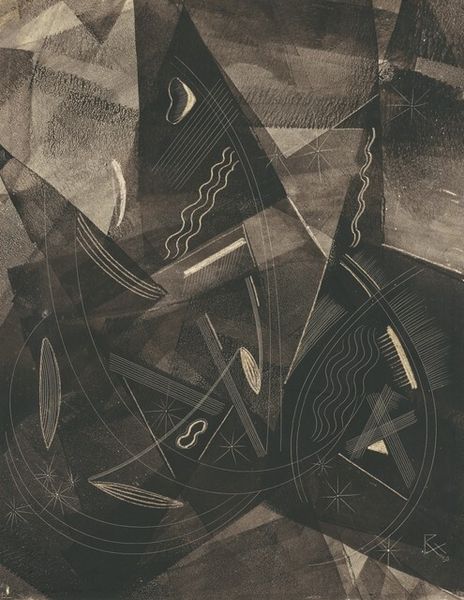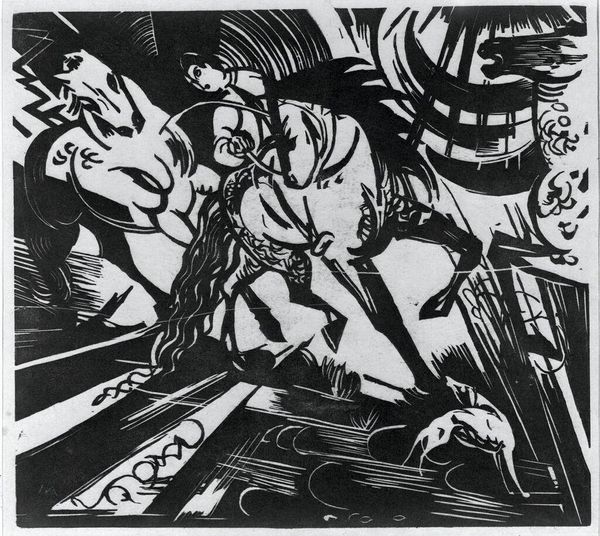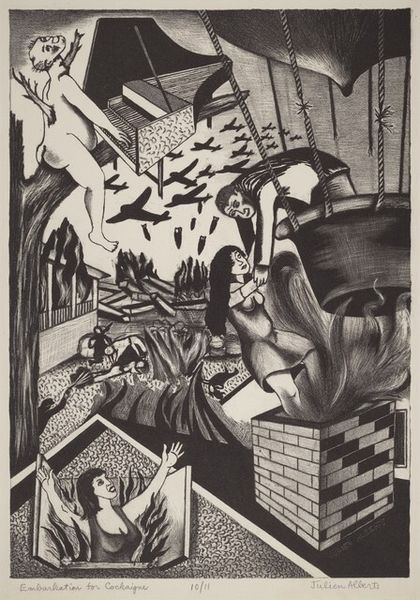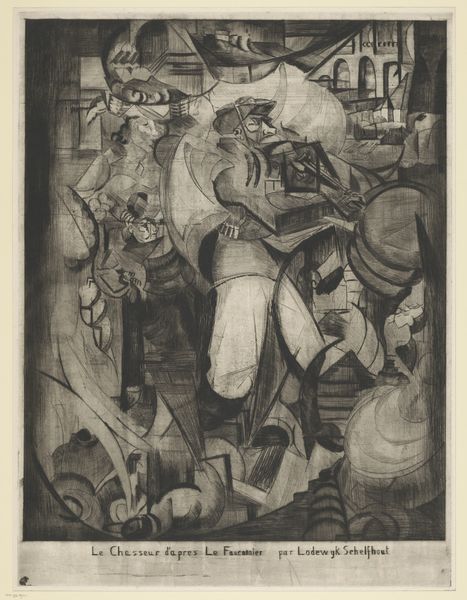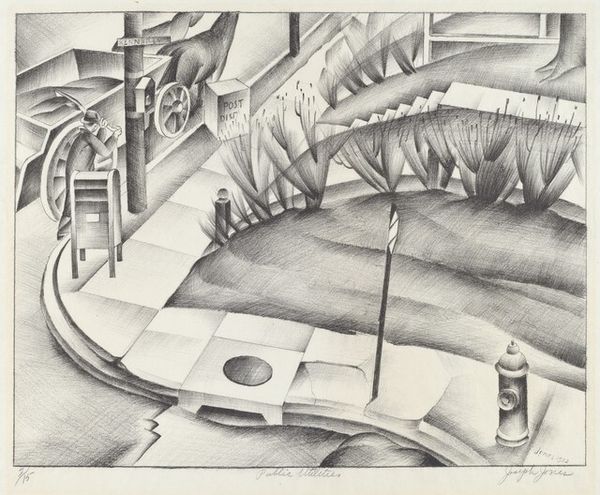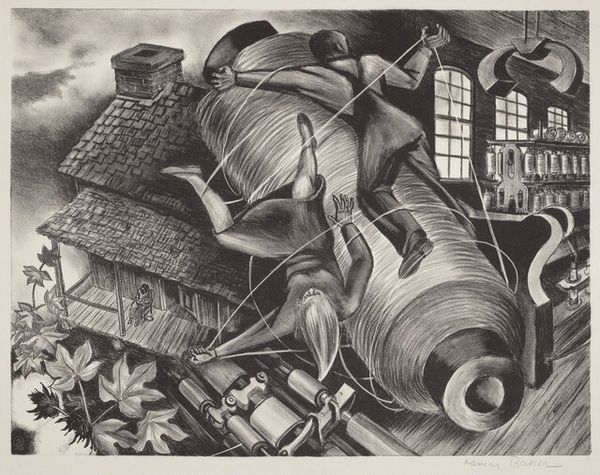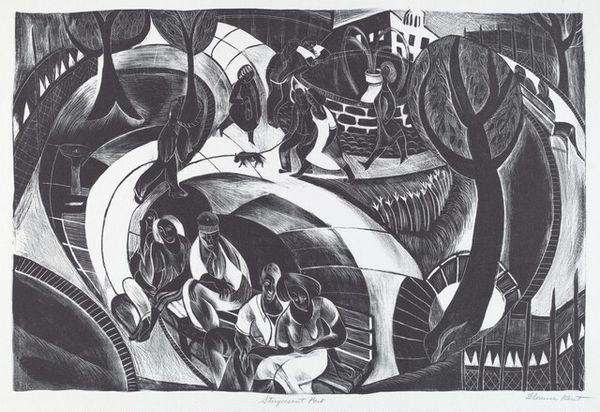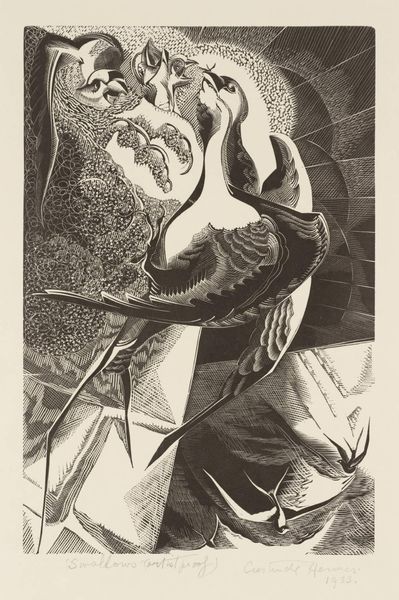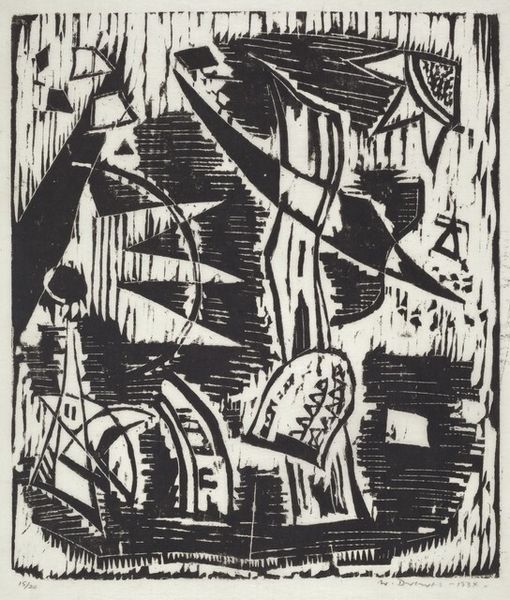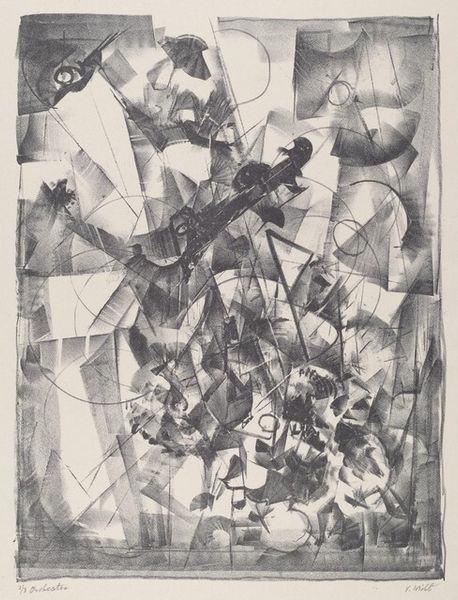
drawing, print, etching
#
abstract-expressionism
#
drawing
#
pen drawing
# print
#
etching
#
form
#
geometric
#
abstraction
#
line
Copyright: National Gallery of Art: CC0 1.0
Curator: This intricate etching, titled "Cloud-Making Machine," was created by Colin Connor in 1967. Editor: My first impression is one of organized chaos. The image feels both deliberate and wonderfully untamed. So many crisscrossing lines – where does the eye even begin? Curator: The power here certainly comes from the stark contrast achieved through the medium of etching, those powerful black lines cutting across the white of the paper, defining planes that don't quite cohere into recognizable forms. The "machine" aspect is more about the idea than a literal depiction, right? Editor: Precisely! The title hints at technology and control, but the image itself feels more like a dreamscape. It reminds me of the rise of environmental awareness in the late 60s, where technological advancements were being questioned for their impact on the natural world. Do you think the artist had a critical message? Curator: Perhaps. Though I'm also compelled by the play with form itself. Note the repeated geometric motifs – squares, triangles, and arcs – that build and deconstruct, layering visual elements until we arrive at an image of complete but engaging abstraction. There are no focal points here; everything holds equal weight. Editor: Which, in itself, makes a statement about the increasingly complex societal structures of the time. Art in the 60s was certainly responding to the changing political and social climate. This print feels like a visual manifestation of that upheaval. What strikes me most is how the lines and shapes, even in their disarray, create a sense of depth. It's as if the artist is inviting us into this abstract, cloud-making world. Curator: I concur. This piece offers an exceptional case study in semiotic disruption. We can analyze each geometric component separately. Yet only combined into something elusive – which in turns evokes an even more significant network of ideas, histories and dreams. Editor: I walk away contemplating art’s profound capacity for dialogue about structure and disorder. Curator: Yes, and it also speaks to the complex beauty that can arise when form and context collide so effectively.
Comments
No comments
Be the first to comment and join the conversation on the ultimate creative platform.
